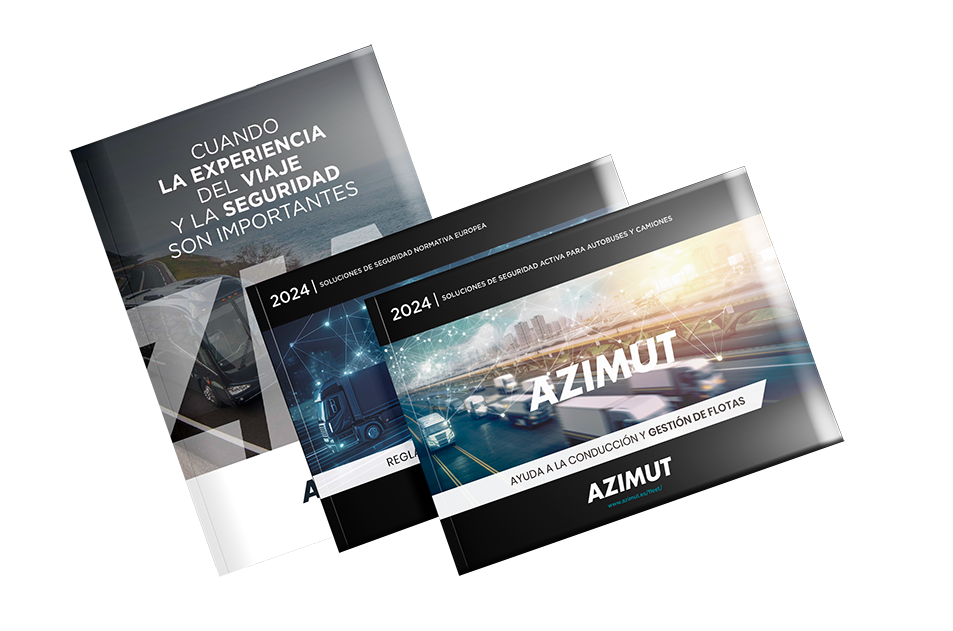Improved safety in buses and coaches through face recognition systems
Traffic accidents have many causes, but driver’s fatigue is clearly one of the most prominent, particularly for drivers of large vehicles due to prolonged driving periods and boredom.
Chilling Statistics
According to the European Transport Safety Council (ETSC), fatigue when driving is responsible for around 20% of the traffic accidents commercial vehicles are involved in, in the European Union. The same data is presented by ERTICO (previously eSafety Forum), which highlights this problem in professional drivers who spend long working days on the road. Reducing or controlling driver’s fatigue could help cut deaths due to traffic accidents in half.
Examples outside of Europe raise similar concerns. In South Korea, from 2013 to 2015, the fatality rate for accidents caused by drowsy bus drivers on freeways was 26.9 deaths for every 100 accidents, four times the rate of all accidents. Fatigued operators are not only a cause for concern in traffic accidents, but is a prevalent problem seen even in the mining industry, where it is the root cause of earth–moving equipment accidents in mines in Australia (as reported by Caterpillar). Out of the 93% of human error-caused haulage truck accidents, 70% are fatigue-related. Even in the public sector, drowsiness and a lack of attention are key contributors to commercial car crashes, accounting for thousands of deaths and injuries each year.
Facial Recognition Systems are the Key
Facial-detection systems are gaining ground worldwide, though affected by privacy laws and regulations in Europe, in countries like China, it is possible to authorise payments, provide access to facilities, and track down criminals with systems based on facial recognition.
A few tech companies have already started to integrate face-detection in the design of driving safety systems, the most popular ones detect if the driver is drowsy, distracted or exhibiting improper behaviour. These systems consist of modules of head-to-shoulder detection, facial detection, fatigue classifications as well as estimations for how long the driver’s eyes are open and a drowsiness percentage that measures how long a driver’s eyes are closed, to reach a fatigue level classification. This is done by using fusion algorithms that estimate the state of the driver’s eyes as well as other regular facial states and movements.
The Solution for Bus and Coach Drivers
The driver monitoring system offered by Azimut detects fatigue through heavy eyelids, as well as other potential threats, such as if the driver is smoking, talking on the phone, or looking somewhere other than the road. This is done through a camera installed on top of the dashboard that is continuously measuring the driver’s facial behaviour, including if his eyes are open or not.
If the system detects any potentially dangerous behaviour, an alarm is activated in the bus, combining a sound with a visual sign on the dashboard screen and the vibration in the seat. If the alarm goes off, a dispatcher in the control room will be alerted to the problem through a backend application. The system even allows for the dispatcher to receive a photo or short video of the driver’s current predicament as proof. Several actions can then be taken to prevent the imminent risk of an accident, such as having the operator call the driver, recommend him a break, take him off duty, etc.
The Azimut DSM system is completely configurable through automating what actions are taken following each kind of alarm and the procedures are defined by each bus or coach operator. Some advantages of the Azimut face recognition system include an advanced algorithm that is able to detect driver’s fatigue, differentiate between several other dangerous behaviours such as phone use, smoking, and distracted driving, has robust mobility hardware, a powerful backend system, and full interoperability with other Azimut CCTV systems.
Although still not compulsory in mainland Europe, it is without a doubt an unavoidable complement for those operators interested in increasing the safety measures of their vehicles while understanding the issues related to their employees.

